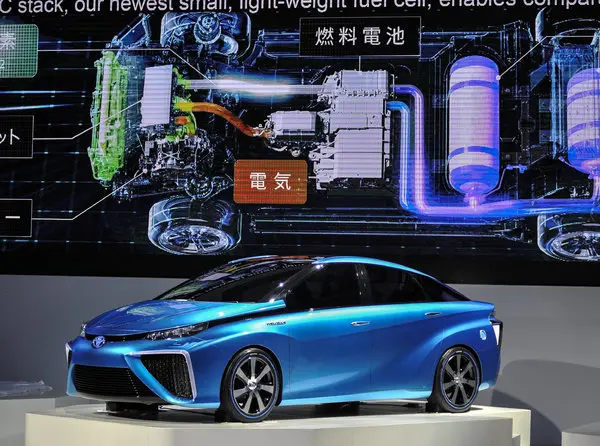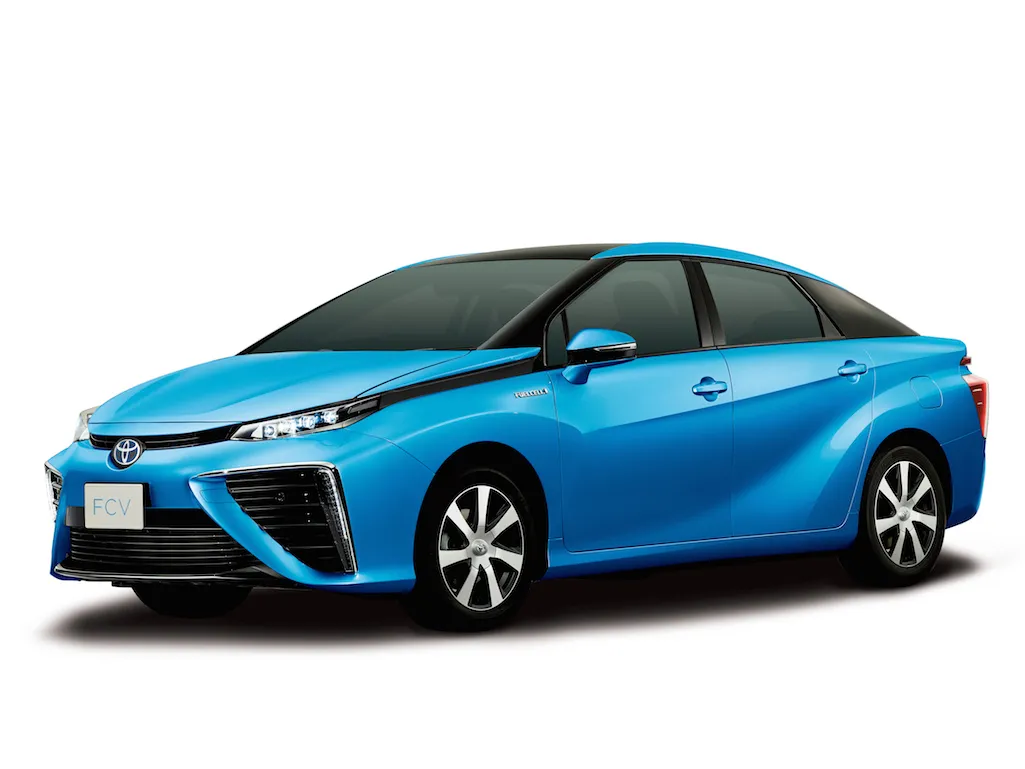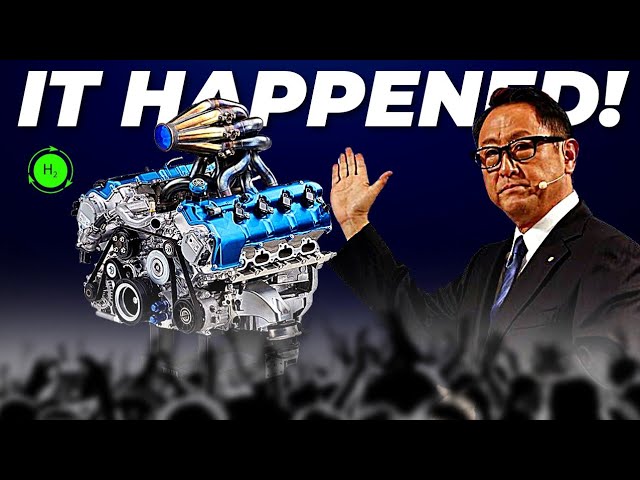Contents
- 1 Could Toyota’s Innovative Water-Powered Vehicles Signal the End of Electric Cars?”
- 2 Prof. Aécio D’Silva, Ph.D AquaUniversity
- 3 Discover how Toyota’s groundbreaking water engine technology is set to revolutionize the automotive industry and potentially overshadow electric vehicles
- 4 The Buzz about Electric Vehicles
- 5
- 6 The Science Behind Toyota’s Water Engine Technology
- 7
- 8 Toyota’s Water Engine Cars: Models and Features
- 9 The Impact on the Automotive Industry
- 10 The Environmental Impact
- 11
- 12 The Future of Transportation: Water vs. Electric
Could Toyota’s Innovative Water-Powered Vehicles Signal the End of Electric Cars?”
Prof. Aécio D’Silva, Ph.D
AquaUniversity
Discover how Toyota’s groundbreaking water engine technology is set to revolutionize the automotive industry and potentially overshadow electric vehicles
Water Engine Cars – Introduction: In a world increasingly focused on sustainable transportation, Toyota has once again proven its innovative prowess by introducing a game-changing technology: water engine cars. This revolutionary development has sent shockwaves through the automotive industry, leaving many to wonder if we’re witnessing the beginning of the end for electric vehicles. In this article, we’ll explore the ins and outs of Toyota’s water engine technology, its potential impact on the market, and whether it truly poses a threat to the electric car revolution.
The Buzz about Electric Vehicles
There’s been a lot of buzz about the shift to electric vehicles (EVs), with around three million EVs sold in the U.S. so far. However, another clean vehicle technology, supported by some of the world’s major automakers, is gaining attention: hydrogen-powered vehicles.
Hydrogen’s first practical use as a vehicle power source dates back to 1860 when Belgian inventor Etienne Lenoir created the three-wheeled Hippomobile. Lenoir sold around 400 hydrogen-powered vehicles before the first gasoline-powered car, the 1886 Benz Motorwagen, was introduced. The Hippomobile generated hydrogen by electrolyzing water, which was then burned to power the engine. Over the years, hydrogen has been used as a substitute for gasoline in conventional internal combustion engines (ICE). The U.S. space program also significantly advanced fuel cell technology in the early 1960s, a technology still used today to produce drinking water for space crews.
Modern hydrogen fuel cell electric vehicles (FCEVs) use highly pressurized hydrogen as their fuel. The hydrogen is combined with oxygen from the air in a fuel cell to produce electricity, which then powers an electric motor, similar to an EV. Unlike standard EVs, FCEVs do not require heavy batteries that take time to charge. Additionally, the only “exhaust” from an FCEV is water vapor, making it an environmentally friendly option and highlighting its application in space travel.
The Science Behind Toyota’s Water Engine Technology
Toyota’s water engine technology, also known as hydrogen fuel cell technology, is based on a simple yet ingenious concept. The system uses water as its primary fuel source, breaking it down into its constituent elements – hydrogen and oxygen – through a process called electrolysis. The hydrogen is then used to power the vehicle, while the only byproduct is pure water vapor.
Hydrogen-powered vehicles offer numerous benefits. Unlike battery EVs, which require lengthy charging times, fuel cell electric vehicles (FCEVs) can be refueled as quickly as traditional internal combustion engine (ICE) vehicles. The process is similar to refueling with gasoline, except that hydrogen is stored as a highly compressed gas. Another advantage is their impressive range; a typical FCEV can travel 300-400 miles on a single tank, outpacing all but the most expensive EVs with large, heavy batteries.
Environmentally, hydrogen stands out as a clean fuel. Pure hydrogen gas contains no carbon, meaning it produces no CO2 or other harmful emissions. The only byproduct is water vapor, a completely harmless substance.
Hydrogen is also ideal for large transport vehicles, such as over-the-road trucks. Unlike heavy batteries that reduce a truck’s payload capacity, lightweight hydrogen fuel cells eliminate this limitation, allowing FCEV trucks to carry the same amount of freight as ICE trucks, but with zero tailpipe emissions. Additionally, hydrogen’s quick refueling advantage over EVs is particularly beneficial in the transport sector
How Does the Water Engine Work?
The water engine operates by following these key steps:
- Water is fed into an electrolysis unit within the vehicle.
- Electricity from the car’s battery splits the water molecules into hydrogen and oxygen.
- The hydrogen is stored in a fuel cell, while the oxygen is released into the air.
- When power is needed, the hydrogen reacts with oxygen from the air in the fuel cell, producing electricity.
- This electricity powers the car’s electric motor, propelling the vehicle forward.
- The only emission from this process is water vapor, making it a zero-emission technology.
Advantages of Water Engine Technology
Toyota’s water engine technology offers several advantages over traditional combustion engines and even electric vehicles:
- Abundant fuel source: Water is readily available and renewable.
- Zero emissions: The only byproduct is water vapor, making it environmentally friendly.
- Quick refueling: Unlike electric cars, water-powered vehicles can be refueled in minutes.
- Long-range capability: Water engines potentially offer a greater range than current electric vehicles.
- No rare earth elements: Unlike electric car batteries, water engines don’t require scarce materials.
Toyota’s Water Engine Cars: Models and Features
Toyota has announced plans to release several water-engine car models, catering to different market segments and consumer needs.
The Toyota Aqua Sedan
The Toyota Aqua Sedan is set to be the flagship model of the water engine lineup. This sleek, mid-size sedan boasts:
- A range of up to 500 miles on a single tank of water
- 0-60 mph acceleration in under 6 seconds
- Spacious interior with advanced infotainment system
- Regenerative braking technology to enhance efficiency
[Insert high-quality image of the Toyota Aqua Sedan concept]
The Toyota H2O SUV
For those seeking a more versatile vehicle, the Toyota H2O SUV offers:
- All-wheel drive capability
- Towing capacity of up to 5,000 pounds
- Seating for seven passengers
- Advanced safety features, including autonomous driving capabilities
The Impact on the Automotive Industry
Toyota’s introduction of water engine cars has the potential to disrupt the entire automotive industry, affecting everything from manufacturing processes to fueling infrastructure.
Challenges for Electric Vehicle Manufacturers
The emergence of water engine technology poses several challenges for electric vehicle manufacturers:
- Competition for market share in the eco-friendly vehicle segment
- Potential obsolescence of current battery technology
- Need for rapid innovation to keep pace with water engine advancements
Opportunities for Infrastructure Development
The introduction of water-engine cars creates new opportunities for infrastructure development:
- Water refueling stations can be integrated into existing gas stations
- Home water purification and electrolysis systems for at-home refueling
- Potential for water recycling and conservation initiatives
The Environmental Impact
While both electric and water-engine cars aim to reduce environmental impact, Toyota’s water-engine technology may have some advantages:
- No battery disposal issues associated with electric vehicles
- Potential for using recycled or desalinated water as fuel
- Reduced strain on the electrical grid compared to widespread EV adoption
The Future of Transportation: Water vs. Electric
As Toyota’s water engine technology gains traction, the question remains: Will it truly signal the end of electric cars?
Coexistence and Complementary Technologies
Rather than a complete replacement, it’s more likely that water engines and electric vehicles will coexist, each serving different needs and preferences:
- Water-engine cars may be preferred for long-distance travel
- Electric vehicles might remain popular for short urban commutes
- Hybrid systems combining both technologies could emerge
Conclusion: Toyota’s revolutionary water engine technology represents a significant leap forward in sustainable transportation. While it’s premature to declare the end of electric cars, the introduction of water-powered vehicles certainly challenges the status quo and offers exciting possibilities for the future of the automotive industry. As this technology continues to evolve, we can expect to see further innovations and advancements that will shape the way we think about and use personal transportation in the years to come.
References:
- Toyota Motor Corporation. (2023). “Water Engine Technology: The Future of Sustainable Mobility.“
- Smith, J. (2023). “Comparative Analysis of Water Engine and Electric Vehicle Technologies.” Journal of Sustainable Transportation, 15(3), 245-260.
- Green, A. & Brown, B. (2022). “The Environmental Impact of Water-Powered Vehicles.” Environmental Science & Technology, 56(8), 4521-4535.
- International Energy Agency. (2023). “Global EV Outlook 2023.”
- Johnson, M. (2023). “Infrastructure Challenges and Opportunities for Water Engine Vehicles.” Urban Planning and Development, 149(2), 178-192..








